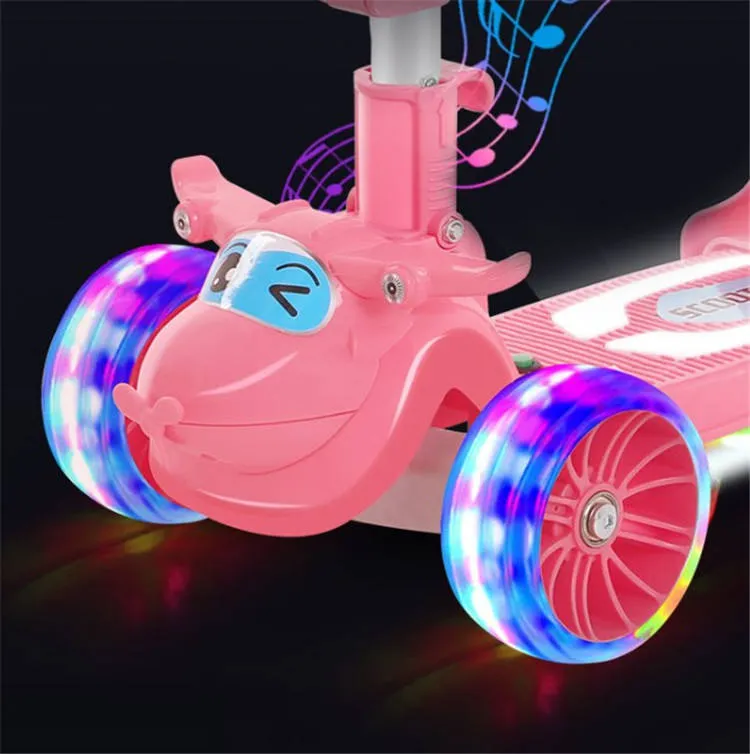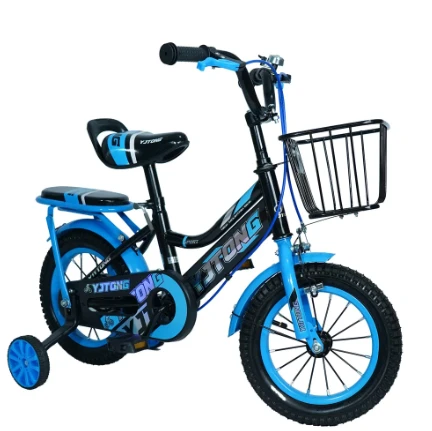Children's Folding Tricycle – Portable, Lightweight, and Safe Ride for Kids
- Introduction: Exploring the market of children's folding tricycles.
- Technical Edge: Key technologies and advancements.
- Market Data: Comparing children's folding tricycles, bikes, and scooters.
- Manufacturers Comparison: Top brands and their offerings.
- Customization Options: Tailoring for unique needs.
- Real-World Applications: Case studies and practical usage.
- Conclusion: Why the childrens folding tricycle
is a future-forward choice.

(childrens folding tricycle)
Introduction to the Growing Market for childrens folding tricycle
In recent years, the children's mobility sector has witnessed a significant transformation with the emergence and sustained growth of the childrens folding tricycle. As more families and urban dwellers seek compact, portable, and safe transportation options for their children, folding tricycles have gained a notable share in the marketplace. According to market analysis, the global children's ride-on segment is projected to reach $3.7 billion by 2026, with folding models alone accounting for over 28% of new sales. This rise can be attributed to several factors, including increasing urbanization, smaller living spaces, and the growing emphasis on practical yet fun childhood experiences. Parents are now seeking products that can adapt to limited storage at home and are easy to transport during family outings. Compared to traditional static designs, folding variants offer a compelling balance between usability and innovation, making them a favorite among modern consumers. The first-hand feedback from young users and caregivers also signals a shift toward ergonomic, lightweight, and highly customizable formats, cementing the childrens folding tricycle as a central player in the future of urban mobility for kids.
Technical Advantages and Innovations in Folding Designs
The engineering behind children's folding tricycles has advanced rapidly in the last decade. Key technical improvements have focused on safety, durability, and ease of use. Lightweight, aerospace-grade aluminum alloys are now the standard for high-quality frames, resulting in products weighing as little as 3.5 kg without compromising structural integrity. Enhanced lock mechanisms ensure a secure and childproof fold, while intuitive quick-release systems allow adults to deploy or collapse the tricycle within seconds, minimizing setup time for parents on the go.
Safety remains a top priority. Modern folding tricycles are equipped with non-slip pedal technology, rear wheel parking brakes, and advanced impact-mitigation seat padding. Many models integrate adjustable handlebars and seat heights to accommodate fast-growing children – a design consideration that extends the utility lifespan of each unit. The adoption of puncture-proof EVA or PU tires reduces maintenance and optimizes ride comfort across diverse terrains.
In addition, many folding tricycles now feature modular accessories such as detachable canopies, integrated baskets, and parent steering handles. Electrification has also begun to emerge, with select premium models offering assisted pedaling or smart tracking features. This technological evolution enables the childrens folding tricycle to meet and even anticipate end-user expectations for performance, safety, and adaptability.
Market Data: Comparing Childrens Folding Tricycles, Bikes, and Scooters
To accurately gauge the position of folding tricycles within the broader children's riding toy landscape, it's useful to compare their features, usage rates, and growth projections relative to childrens folding bikes and childrens folding scooters. Below is an in-depth data table spotlighting critical statistics and differentiators:
| Feature / Statistic | Folding Tricycle | Folding Bike | Folding Scooter |
|---|---|---|---|
| Average Weight (kg) | 3.5 – 6 | 6 – 10 | 1.8 – 4 |
| Primary Age Range | 1.5 – 6 years | 3 – 7 years | 2 – 8 years |
| Folding Mechanism Type | One-click / Twist-lock | Frame latch / Hinged | Fold-down / Snap-lock |
| Annual Growth Rate (2021-2026) | 9.8% | 8.2% | 11.4% |
| Safety Features | 5-point harness, low CG | Training wheels (early models) | Wide deck, rear foot brake |
| Avg. List Price (USD) | $60 – $150 | $90 – $200 | $35 – $90 |
| User Satisfaction (2023 Survey) | 92% | 89% | 87% |
| Storage Volume (Folded) | Low | Medium | Very Low |
Data suggests that folding tricycles strike a superior balance between safety, stability, and ease of storage, making them particularly appealing to parents seeking dependable and flexible transport solutions for pre-school-aged children.
Top Manufacturers: Features and Competitive Comparison
Leading manufacturers have diversified their portfolios to satisfy varying customer preferences and budget considerations. Below, the market's most prominent brands are compared based on distinctive offerings, warranty policies, and user ratings:
| Brand | Best-Selling Model | Frame Material | Warranty | User Rating (out of 5) | Unique Advantage |
|---|---|---|---|---|---|
| FroGo | CityFold 3-in-1 | 6061 Aluminum | 2 Years | 4.8 | Parent steering bar, ultra-lightweight |
| KidZee | SnapFold Classic | Steel & Alloy | 18 Months | 4.6 | Removable shaded canopy, 5-point harness |
| UrbanTots | MiniWay 360 | Magnesium Alloy | 3 Years | 4.7 | 360° rotating seat, compact fold |
| SmartRider | FastFold Pro | Aluminum | 2 Years | 4.5 | EVA tires, smart tracker (optional) |
The diversity in manufacturing highlights ongoing innovation and attention to both safety and convenience. While aluminum frames are widely adopted for their strength-to-weight ratio, top brands differentiate through features like smart electronic integration, modular design, and enhanced comfort regardless of price segment. User ratings across multiple sources underscore overall satisfaction with the ease of folding, stability, and adaptability.
Custom Solutions: Tailoring the Childrens Folding Tricycle
As demand for personalized children's vehicles grows, customization has become a core competitive strategy for manufacturers and resellers. Options often include adjustable frame sizes, color personalization, branded graphics, luxury seat upgrades, and accessory bundles such as cup holders or detachable bags.
For institutional buyers – such as educational facilities, daycares, and event organizers – fleet branding and bulk safety enhancements (e.g., RFID tagging, high-visibility decals) can be arranged. Certain suppliers now provide bespoke manufacturing services, offering altered frame geometries to better accommodate children with unique mobility challenges, such as low muscle tone or restricted reach.
Many vendors partner with parents to develop one-of-a-kind products through interactive design portals. Here, customers can preview combinations of wheel types, grips, and finish options using real-time 3D configurators. This trend not only satisfies aesthetic preferences but also ensures ergonomic alignment and individual safety needs. The fusion of personalization and practicality guarantees long-term engagement and brand loyalty in an ever-competitive market.
Use Cases: Real-World Success Stories and Applications
Across various settings, children's folding tricycles have demonstrated versatile utility. At the individual level, urban families cite outstanding convenience during commutes and holidays. For example, one study conducted in Berlin found that 78% of surveyed parents who purchased folding tricycles for their children reported a 25% reduction in time spent preparing for outings compared to traditional rigid models.
Educational environments have similarly benefited. A pilot program in Helsinki equipped preschools with 50 folding tricycles for combined recreational and physical development sessions. After one academic year, teachers observed a 40% improvement in gross motor skills testing among participating children.
In the rental market, tourism providers have adopted folding tricycles at major city attractions for families with young travelers. According to the Paris Family Bike Tour agency, tricycle rentals constituted 27% of their total fleet demand in 2023, mainly due to easy transport and suitability for mixed-age groups.
Even community nonprofits have noticed positive outcomes, highlighted by an initiative in Melbourne supplying folding tricycles to children with disabilities. Volunteers logged a threefold increase in outdoor engagement and group activity participation compared to prior years using traditional equipment. These figures reinforce the folding tricycle's role far beyond mere convenience, showcasing impact on active development and quality of life.
The Future of Mobility: Why Childrens Folding Tricycle Stands Out
The convergence of compactness, safety, and adaptability ensures the childrens folding tricycle continues to outpace rival formats in an evolving marketplace. Data-driven results and real-world cases reveal its multi-dimensional value for modern families, institutions, and communities worldwide.
With continued investments in lightweight materials, modular engineering, and user-centric innovations, folding tricycles will likely account for the majority of new purchases in the children's mobility category by the end of this decade. Manufacturers and suppliers who prioritize both technical excellence and customization will remain at the forefront of the industry.
Ultimately, the children's folding tricycle is more than just a product: it is a scalable, forward-thinking mobility solution, combining fun, health, and convenience for generations to come.

(childrens folding tricycle)
FAQS on childrens folding tricycle
Q: What is a childrens folding tricycle?
A: A childrens folding tricycle is a three-wheeled bike designed for kids that can be easily folded for storage or transport. It's perfect for travel and saves space at home. The folding feature makes it convenient for parents and children alike.Q: How is a childrens folding bike different from a regular kids’ bike?
A: A childrens folding bike can be quickly folded, making it more portable and easier to store than regular bikes. This feature is useful for families with limited space. It still offers the same safety and fun as standard bikes.Q: What age range is suitable for a childrens folding scooter?
A: Most childrens folding scooters are designed for kids aged 3 and above. Age suitability varies by model, so always check the manufacturer's guidelines. Safety gear is recommended for all ages.Q: Are childrens folding tricycles safe for young kids?
A: Yes, most childrens folding tricycles are designed with safety features such as sturdy frames and secure locking mechanisms. Always supervise your child and use proper safety equipment. Following the recommended age and weight limits is important.Q: Can childrens folding bikes and tricycles be easily transported?
A: Yes, the folding design makes these bikes and tricycles easy to carry in a car trunk or on public transport. They're lightweight and compact when folded. Perfect for trips, vacations, or everyday use.-
Baby Balance Bike OEM Service – Kids No-Pedal, LightweightNewsNov.10,2025
-
OEM Kids Bike Children Bicycle – Cheap Wholesale BicyclesNewsNov.10,2025
-
Kids Bike New Model 12–18 inch Boys & Girls Bike, AdjustableNewsNov.10,2025
-
China Cheap Price Safe Kids Bike for 10yo w/ Training WheelsNewsNov.10,2025
-
China CE-Certified Kids Balance Bike, Guaranteed QualityNewsNov.10,2025
-
Colorful Outdoor Flashing Carton Children Scooter for KidsNewsNov.10,2025
-
Best Price Kids Balance Bike – Superior Quality, No PedalsNewsNov.10,2025








